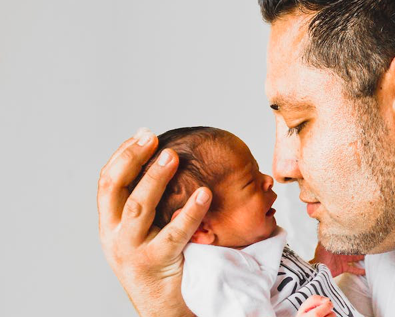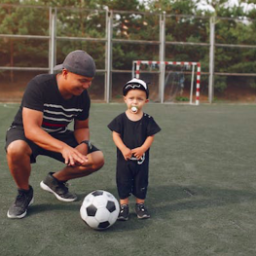
Part 1 of a 5-part series on discrimination and disadvantages faced by boys and men.
How severe is discrimination against males and what are the unique disadvantages that males suffer? When it concerns boys and young men, it took three-quarters of the 967-page book I wrote, Nurturing and Empowering Our Sons to address the problem of these “primal wounds” and risks in full. It took the remaining 25% of the book to recommend ways to remediate the problem, especially in hopes of halting the epidemics of male child abuse, psychiatric drugging of male youths, and male youth suicide. I have found that many forms of discrimination against boys and young men and the disadvantages that they face are overlooked by even the strongest child advocates and male advocates. Here, based on my professional experience with children, youths, and families, I condense the scope of the problem into a five-article series that necessarily also includes the middle-aged and geriatric men that our young males will become.
Let’s delve right into it, starting with the beginning of a male’s life: Conception and birth.
Pregnancy, birth, and adoption
Boys receive a cold welcome into the world
- Boy-preference is a myth
- In cultures like China and India where able-bodied sons were traditionally preferred, it was conditional preference, due to utility, financial, service, and security purposes and obligations, not because boys were loved for themselves or loved more than girls
- In China under the former One-Child Law, first-born disabled and deformed boys and boys as the second or third child were aborted, relinquished, or murdered similar to first-born daughters
- In India, daughters are reportedly protected more than sons from sexual assault
- In contemporary China and India, sex-preference is balanced, with trends of daughter preference among young parents
- When parents can choose with their money, biological boys are less wanted than biological girls
- Up to 80% of prospective parents who conceive using MicroSort sex-selection technology want girls
- When parents can choose through adoption, boys are less wanted than girls
- 80% of prospective parents who adopt choose girls
- There have been parenting trends for the past 20 years of boy gender regret and desperation-for-daughters, with the media carrying disturbing stories with titles such as, “It’s a Boy, and It’s OK to be disappointed”, “Wanting a girl, having a boy”, “Daughters in Demand”, and “How To Buy a Daughter”
- There has also been the “SMOG: Smug Moms of Girls” parenting trend for the past 15 years:
- Internet forums and sites dedicated to mothers who were desperate for daughters and gloat and brag about having them
- Is there a Western trend of sex-selective abortion of boys?
- Given the fact that 80% of mothers are wanting daughters when using the PDG method of sex-selection technology, more male embryos would be destroyed than female
- When reporting on the daughter-desperation trend, the media has documented cases of mothers aborting healthy boys when they were trying for daughters
- Since the 1970s, the birth sex ratio for boys around the world has been declining
- Baby onesies, cards, gifts, or other trinkets and items present baby girls as Mommy and Daddy’s beautiful princess and as a gift, while baby boys are presented as Mommy’s “Little Man” and Daddy’s “Little Dude”:
- Baby boys are presented as tolerated rather than as a gift
- Baby boys presented as if they are already grown men here to serve Mommy and Daddy’s emotional and utility needs.
- The United Nations has a vast global financial, programmatic, and ideological infrastructure to support the human rights of girls and women with no counterparts for boys and men
How baby boys are parented
- Boys are breastfed less than girls and are weaned from breastfeeding earlier than girls
- Baby boys receive less eye gazing and less physical and emotional nurturance from parents than baby girls
- Boys are born emotionally needier than girls, yet receive less emotional attunement than baby girls
- Baby boys may receive less grief support in mourning the loss of the birthmother through adoption, foster care, or death
Bodily integrity
- Baby boys suffer medically-unnecessary amputation of the foreskin, a process which causes excruciating pain and permanent disfigurement to the penis, and puts a baby boy at high risk for sexual trauma, mother-son attachment disruption, breastfeeding disruption, psychological trauma, autistic symptoms, alexithymia, rage, life-long medical complications, and death
- Shaming of boys’ anatomy and bodily functions often begins in infancy with how a mother reacts to bathing, diaper changes, and breastfeeding
Health and wellbeing
- Baby boys are more emotionally vulnerable to stress than baby girls
- Baby boys are born more vulnerable to mother-son attachment disruption than girls, especially with depressed or stressed mothers
- Baby boys are born 4-6 weeks developmentally behind girls in brain development
- Baby boys are born weaker and more vulnerable to disease than baby girls
- More baby boys are born with developmental disabilities than baby girls
- More baby boys are born with disorders of the X chromosome than girls
- More baby boys are born with intellectual disabilities than girls
- More baby boys are born with genital deformities than baby girls
Child abuse
- Baby boys are more likely to suffer child abuse and neglect than baby girls
Mortality
- More male fetuses die than female fetuses
- More infant boys die of Sudden Infant Death Syndrome (SIDS) than infant girls
- Baby boys are more likely to suffer fatal child abuse than girls
- More infant boys die of all-cause mortality than infant girls
References:
Couture, L. A. (2023). Nurturing and Empowering Our Sons: Healing the Wounds of an Anti-Boy Culture by Parenting and Educating the Way Nature Intended. Seacoast Press/MindStir Media. https://laurieacouture.com/products/
Note: Most of the references and statistics for discrimination against boys and young men can be found in my book or they are observations based upon my decades of clinical, educational, social services, and juvenile justice work with children, youths, and families. However, if there is a specific reference or statistic that you are seeking that is not in my book and you cannot find it via Google Scholar or other academic research site, please contact me through The Boys Initiative at:
https://boysinitiative.org/contact-us/
Feedback on this or other articles? Let us know at: editor-in-chief@mensenews.org




